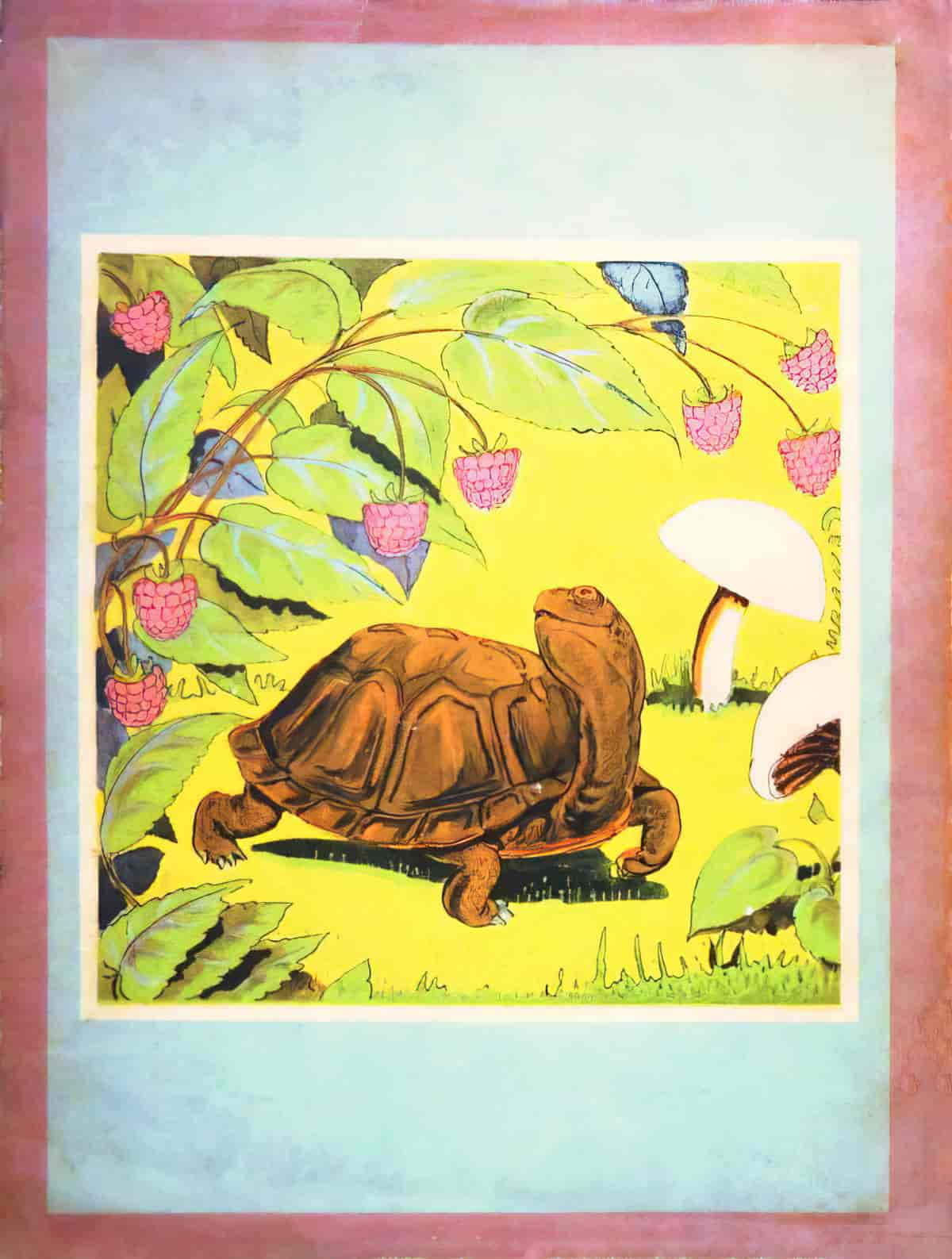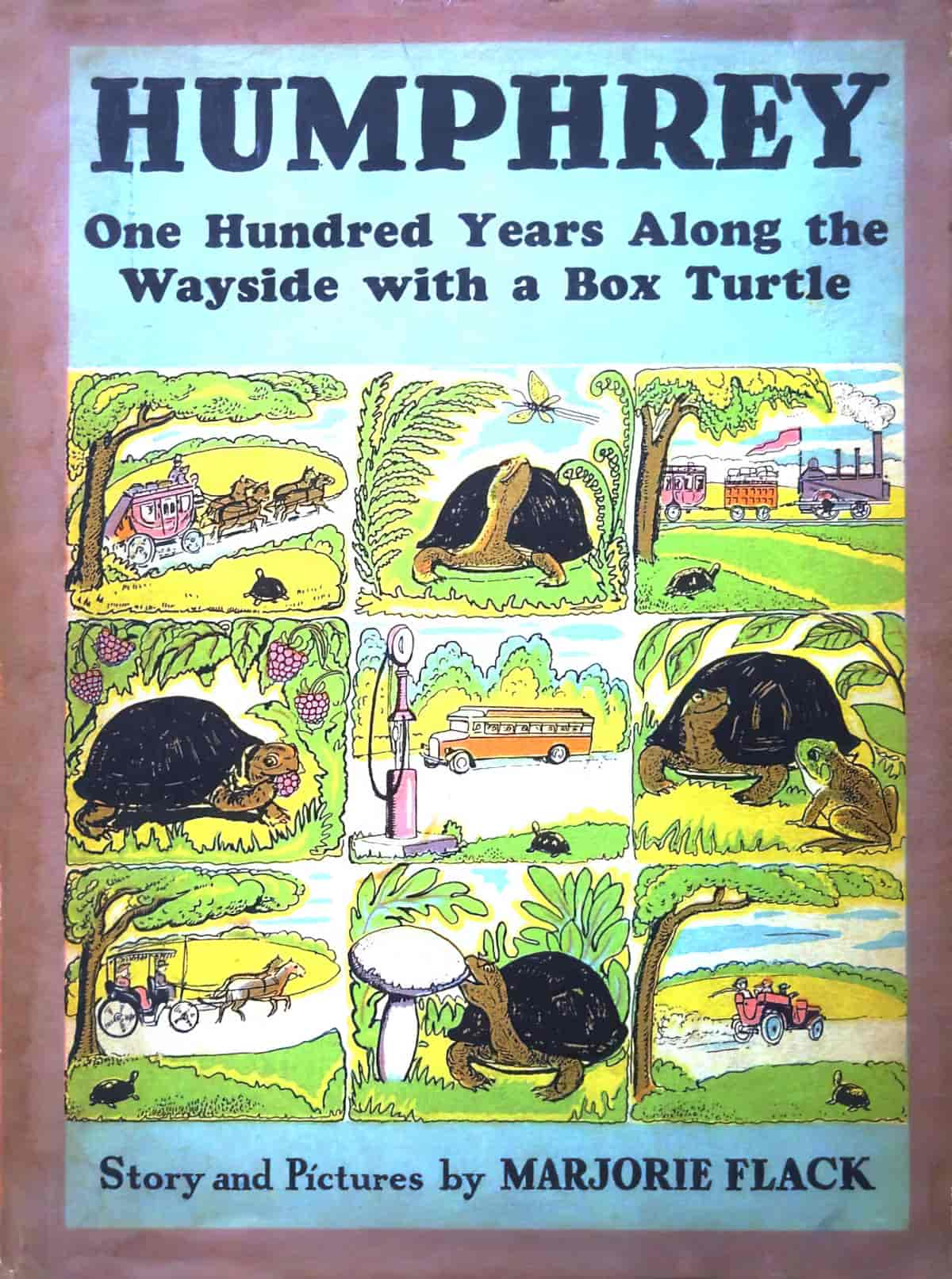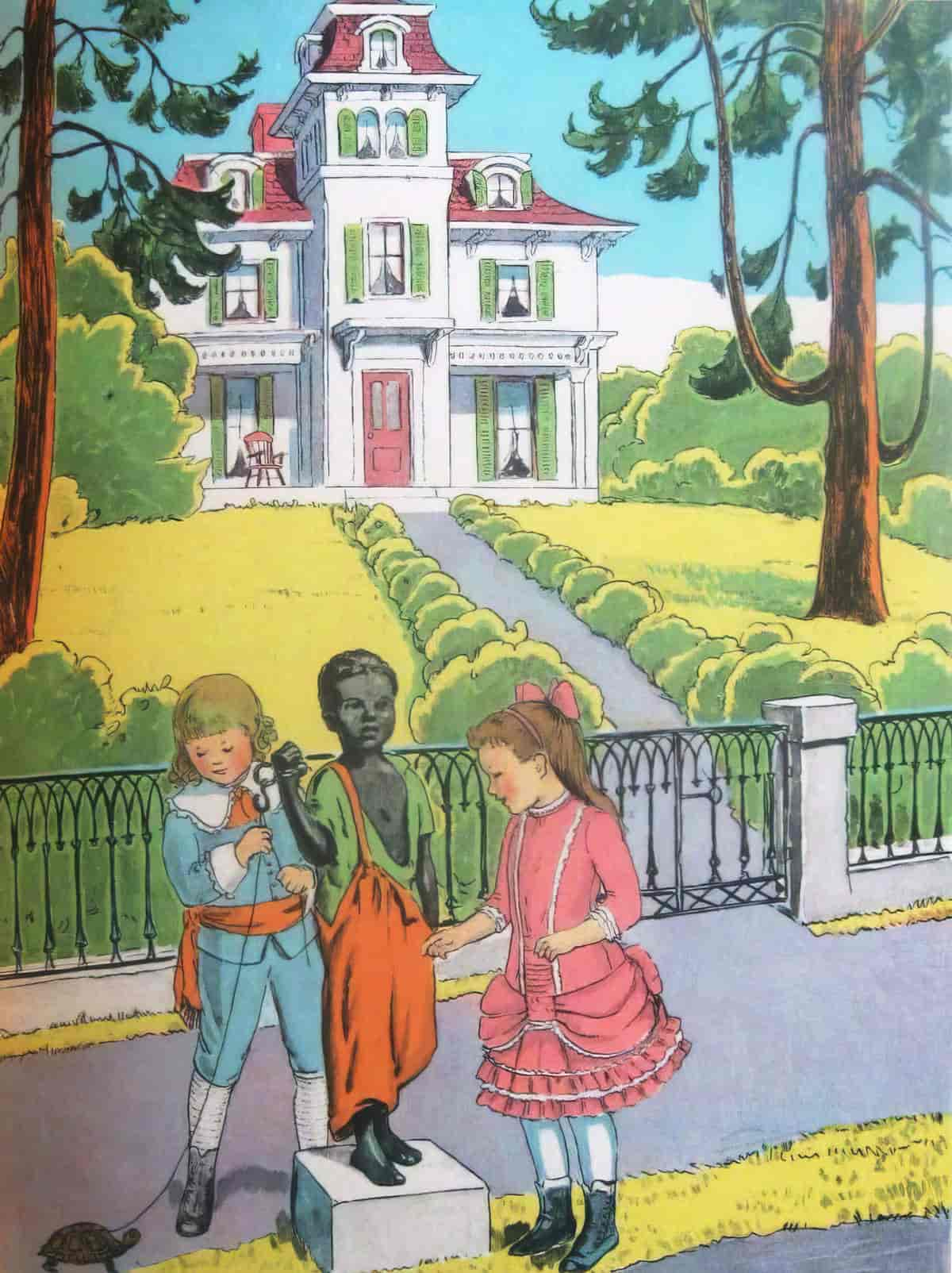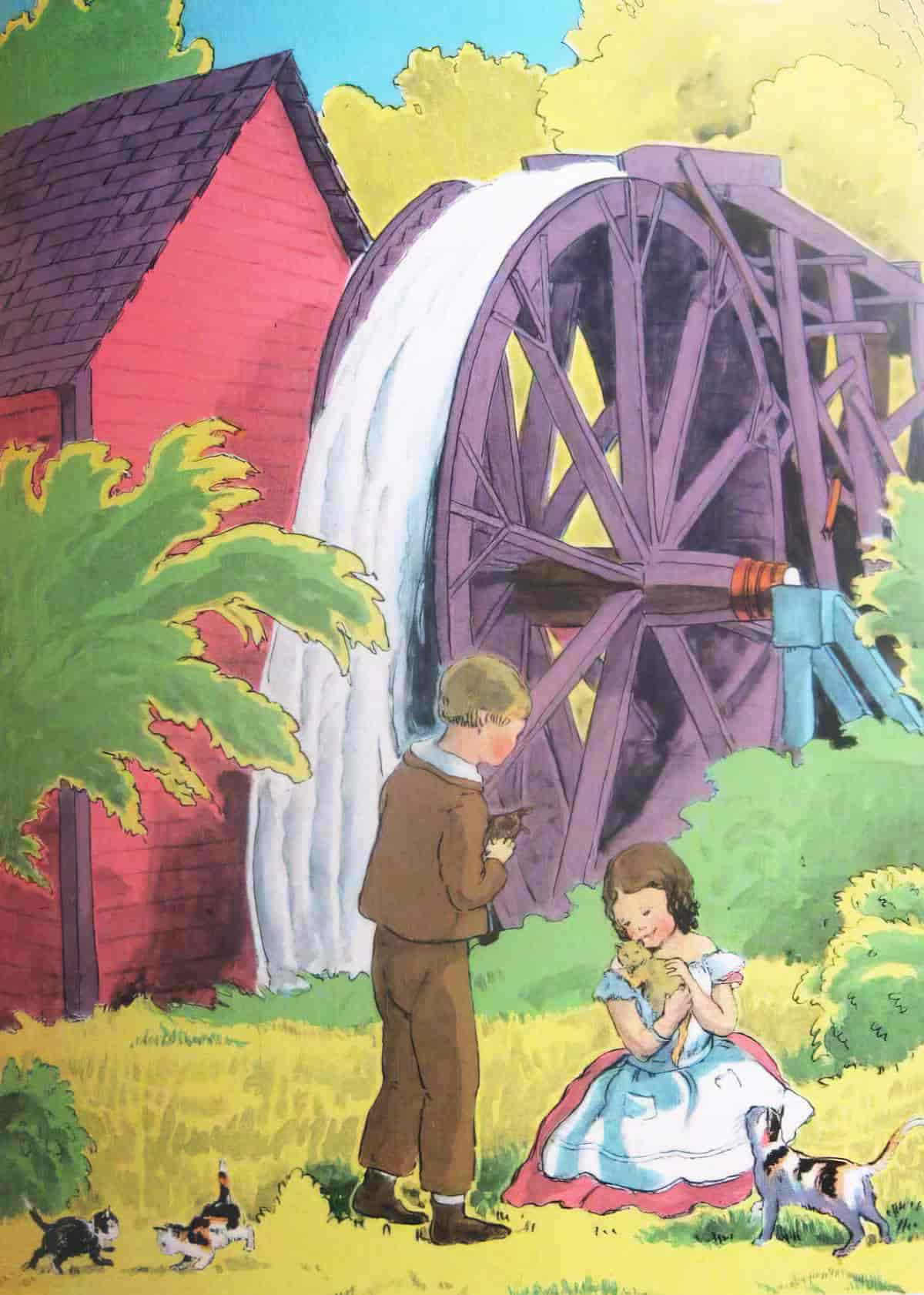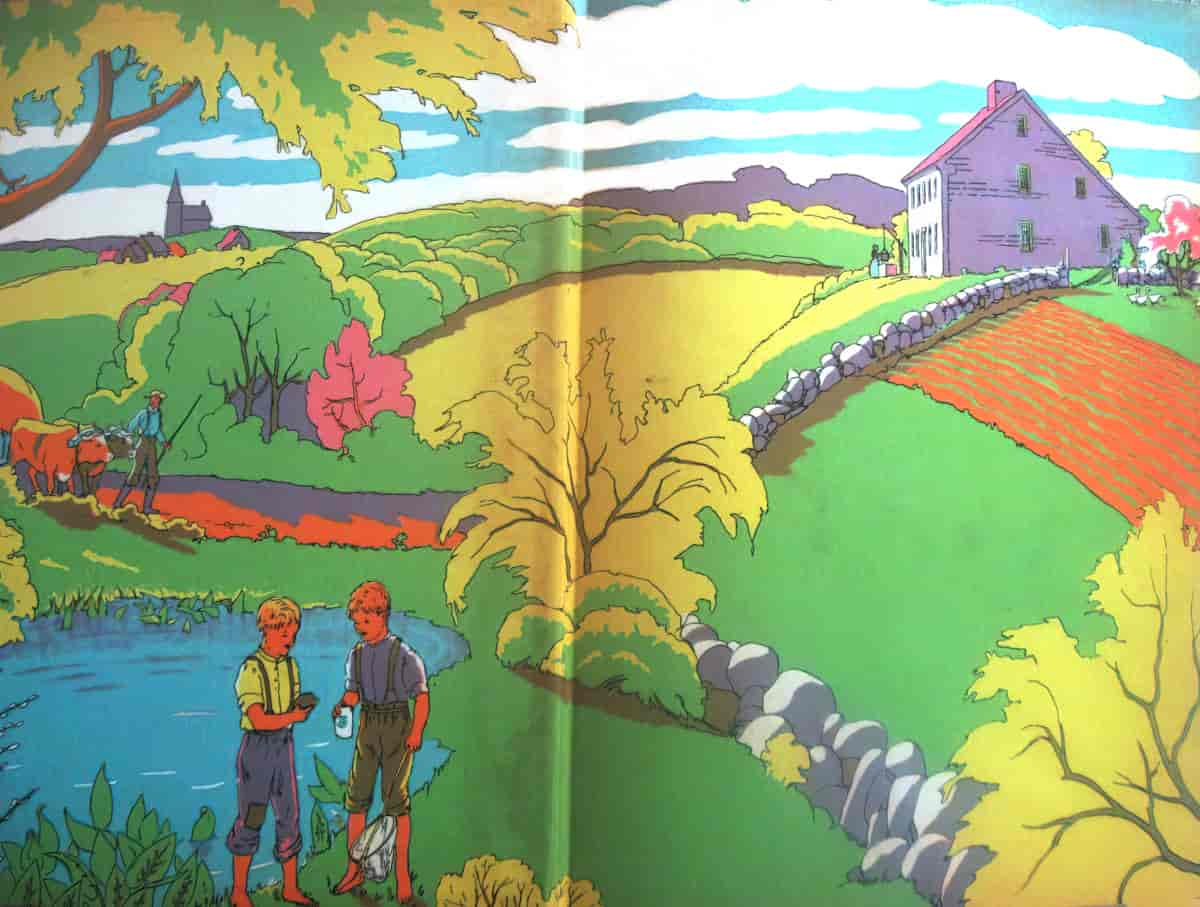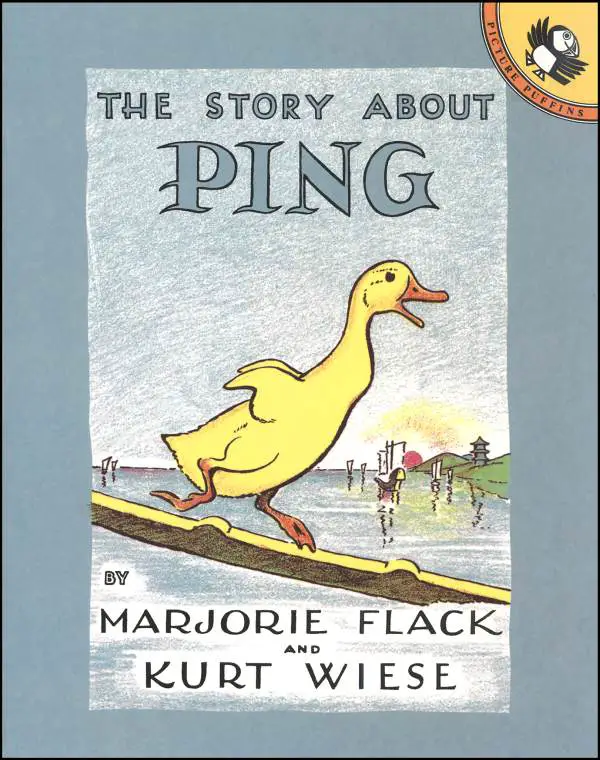Despite the Chinese setting, the author of The Story About Ping (1933) is American, born on Long Island, in fact.
I’m reminded of the work of Margaret Wise Brown in that both Wise Brown and Marjorie Flack had the uncanny knack of including the most unlikely details, which they somehow knew would appeal to young children. While Brown is writing a story about saying goodnight to all of the things in and outside a bedroom, Flack just knows to put eyes on the boat.
Basically, The Story About Ping is an adventure story with mythic structure. The journey takes place down a river.
First published in 1933, it belongs to the first golden age of children’s literature. This applies in both year of publication as well as in morals: Children in this first golden age were expected to take ill treatment on the chin and face up to their infractions of rules set by (supposedly caring) adults in authority.
NOTES ON THE ILLUSTRATION
The illustrator, however, did live in China for six years as a young man. (Kurt Wiese is German.) He lived in a variety of different countries. It’s interesting, therefore, to look at his choice of colour palette, which is quite unusual. For him, China is cast in a yellow hue.
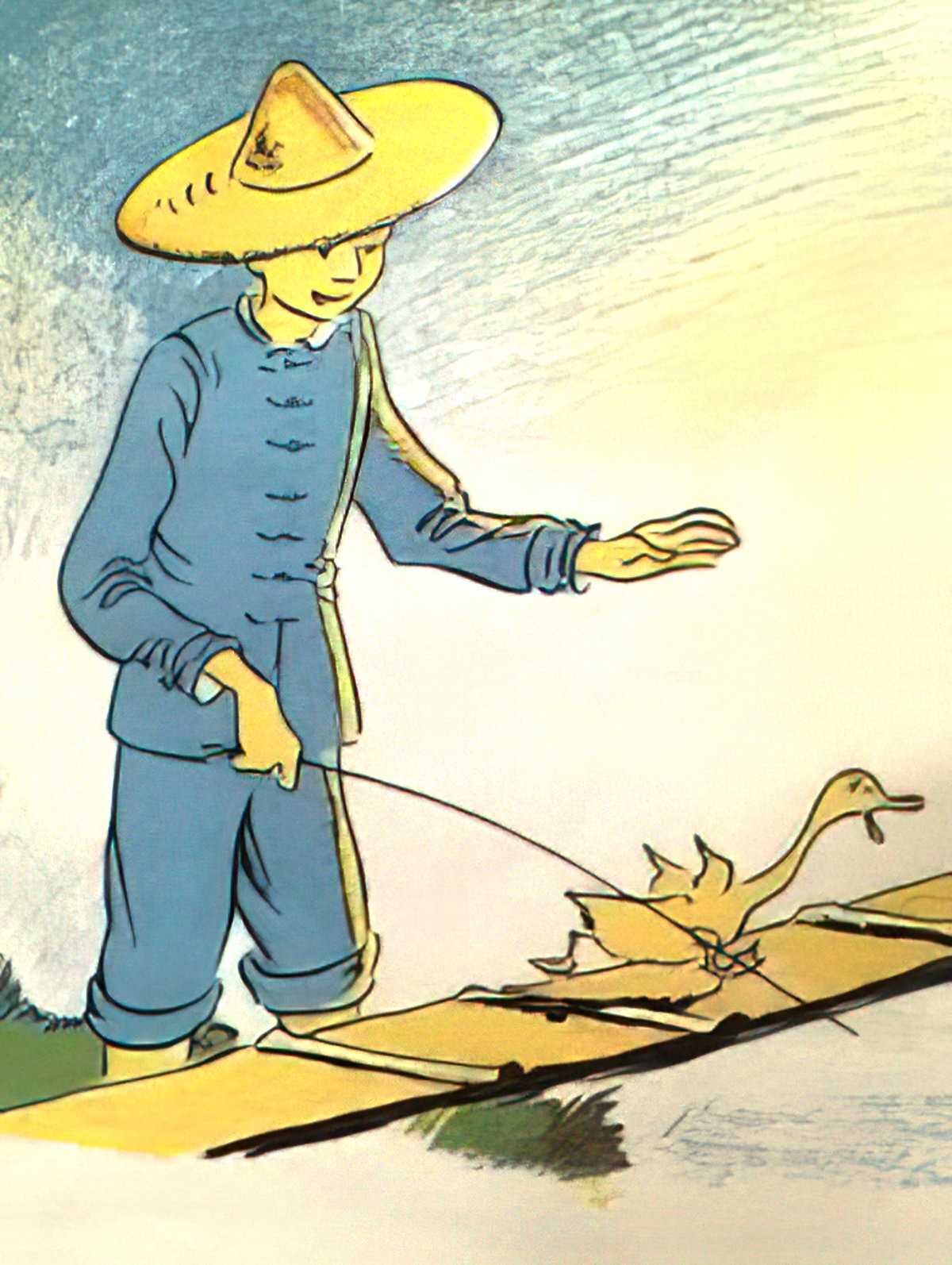
Asian Dust (also yellow dust, yellow sand, yellow wind or China dust storms) is a meteorological phenomenon which affects much of East Asia year round but especially during the spring months. The dust originates in the deserts of Mongolia, northern China and Kazakhstan where high-speed surface winds and intense dust storms kick up dense clouds of fine, dry soil particles.
Asian Dust, Wikipedia

The colour palette of The Story About Ping was replicated a decade later by illustrator Carolin Jackson who created “The Story of China” for children, published 1945. According to the mid-20th century conceptualisation of China, the place features a lot of primary yellow.
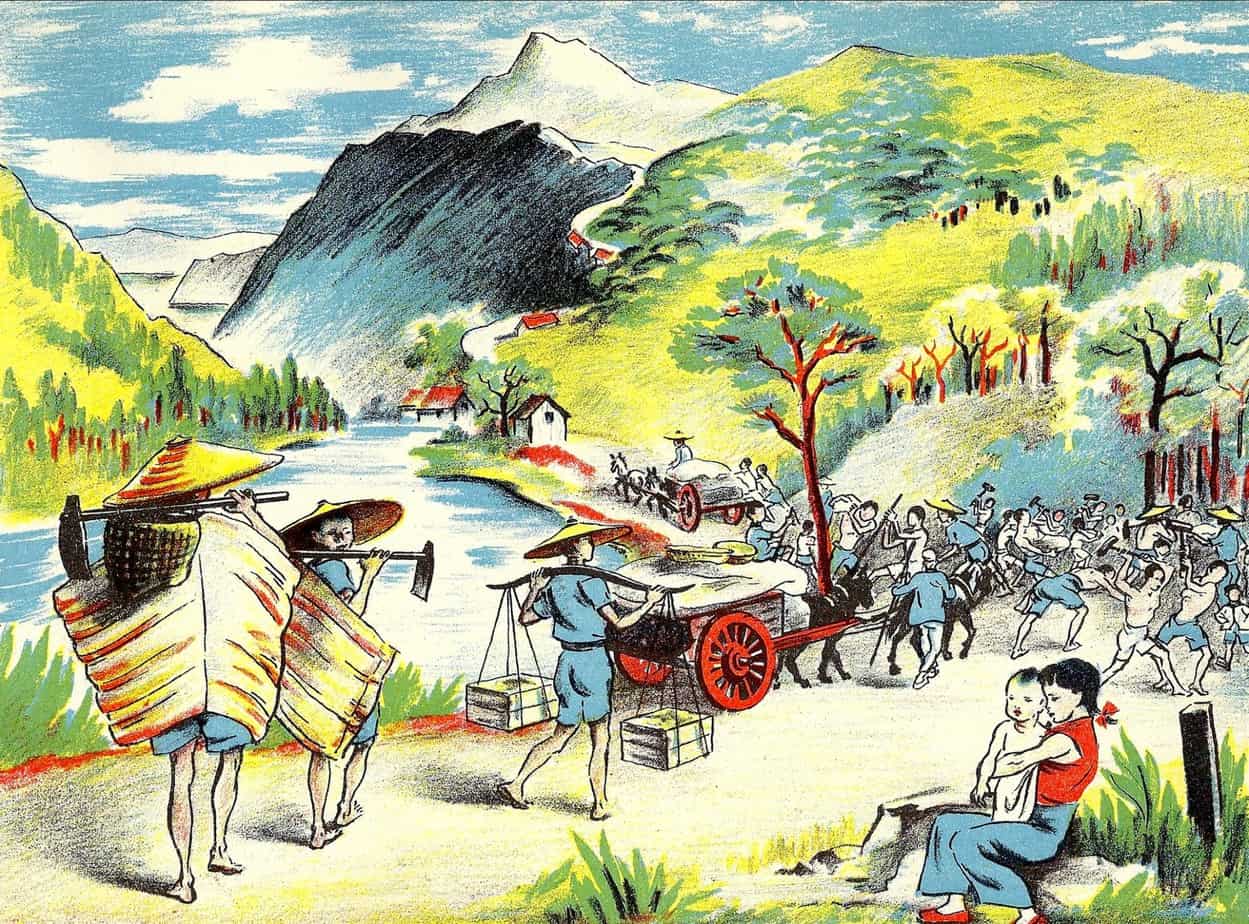
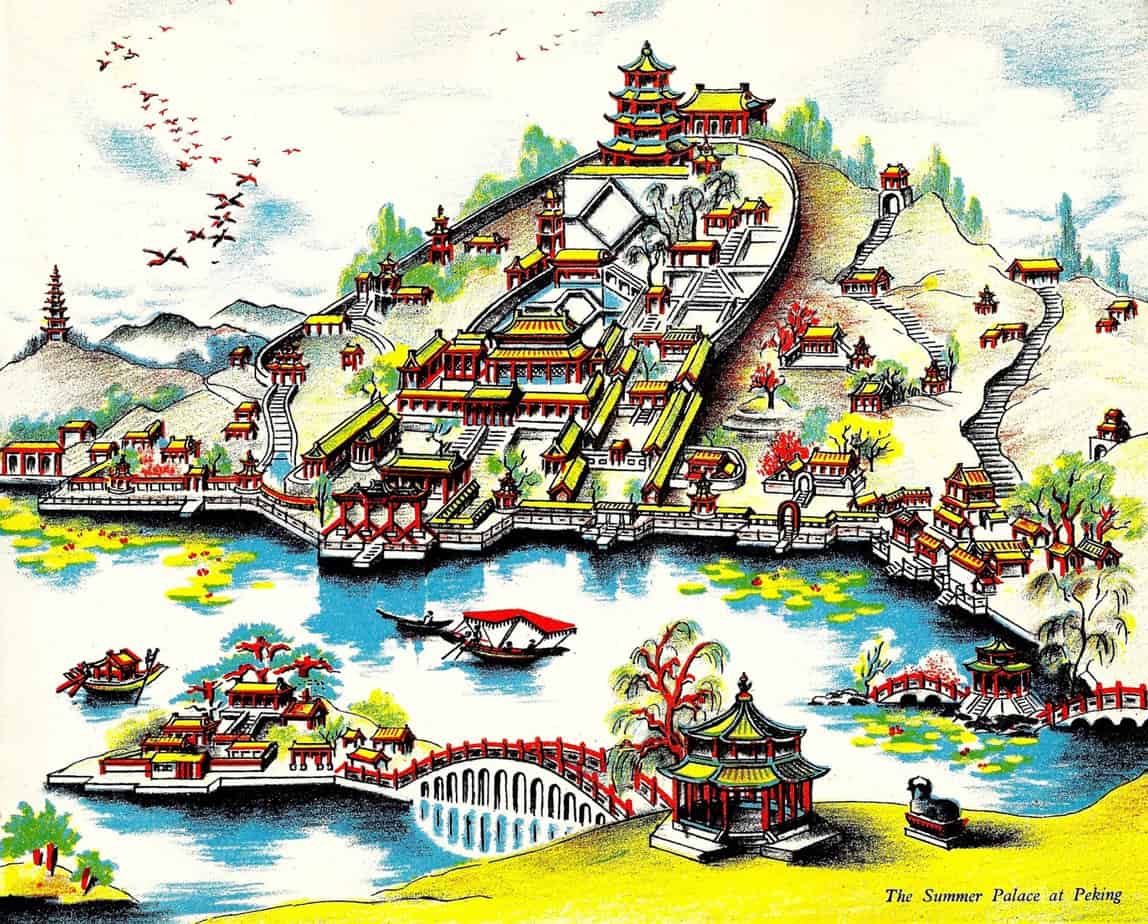
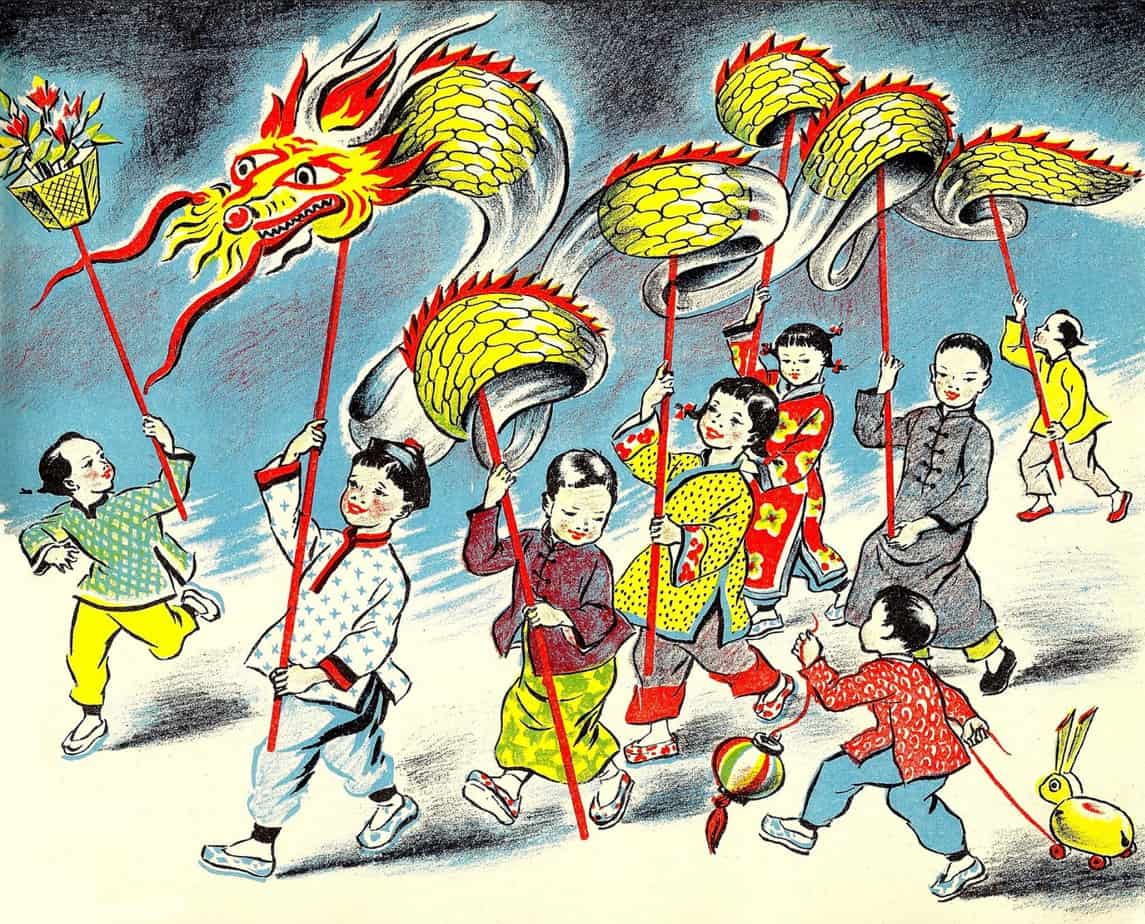
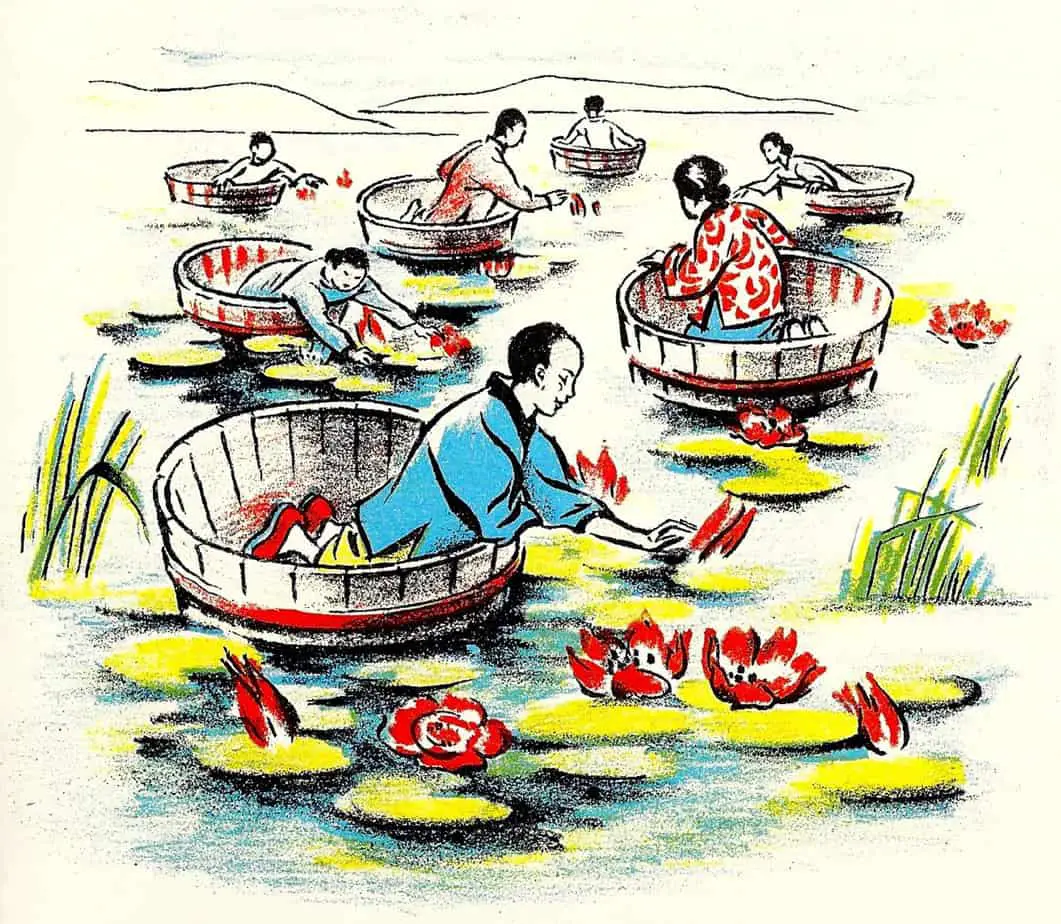
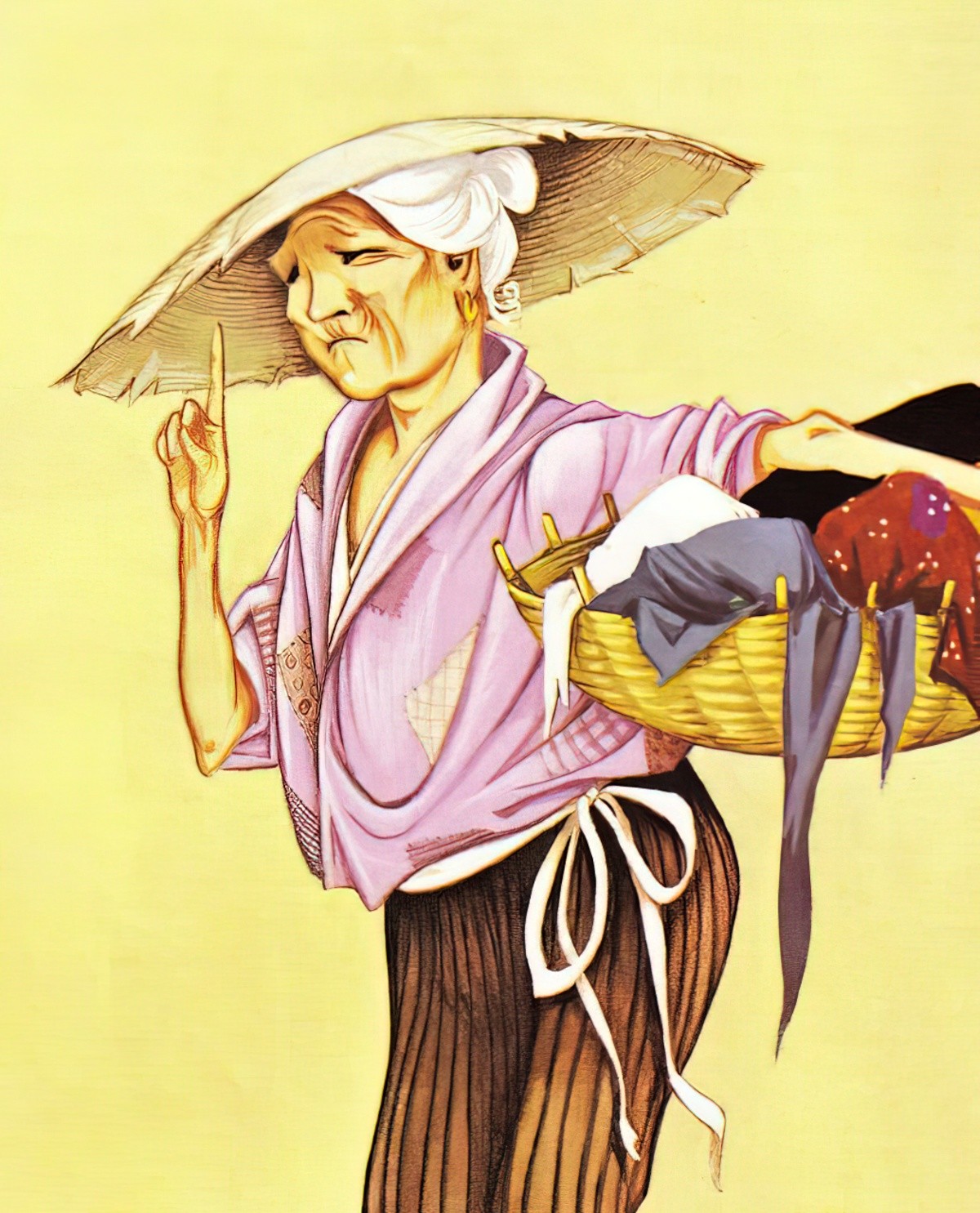
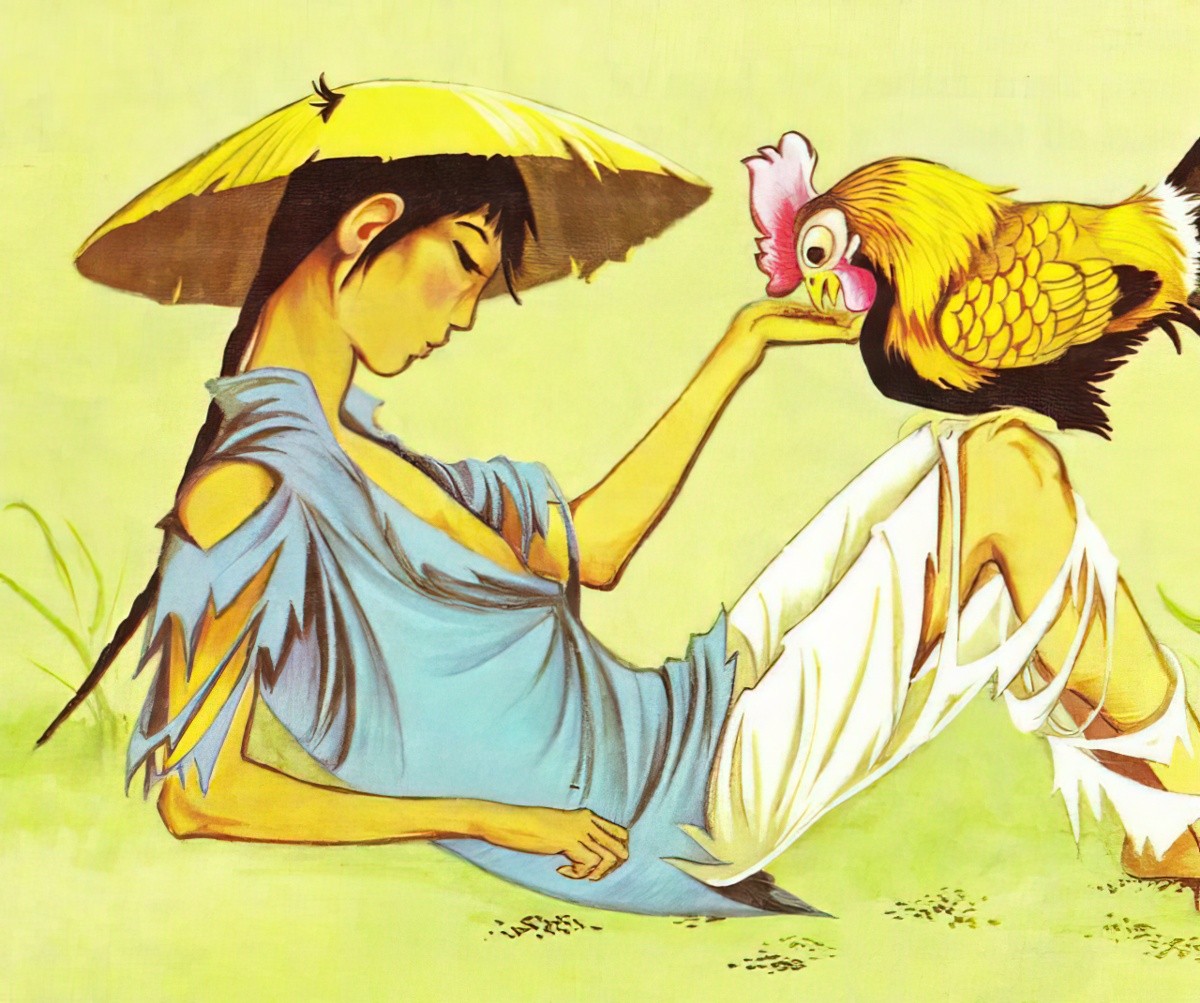
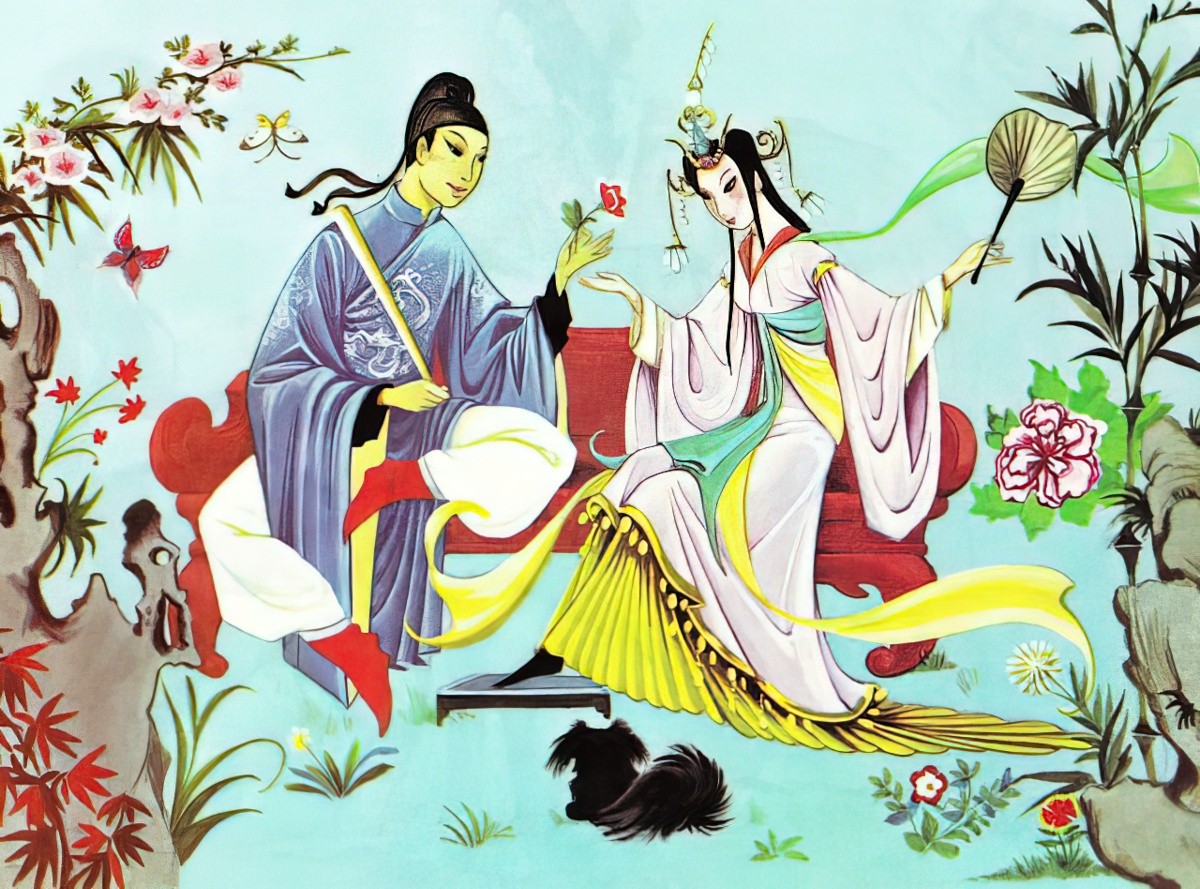
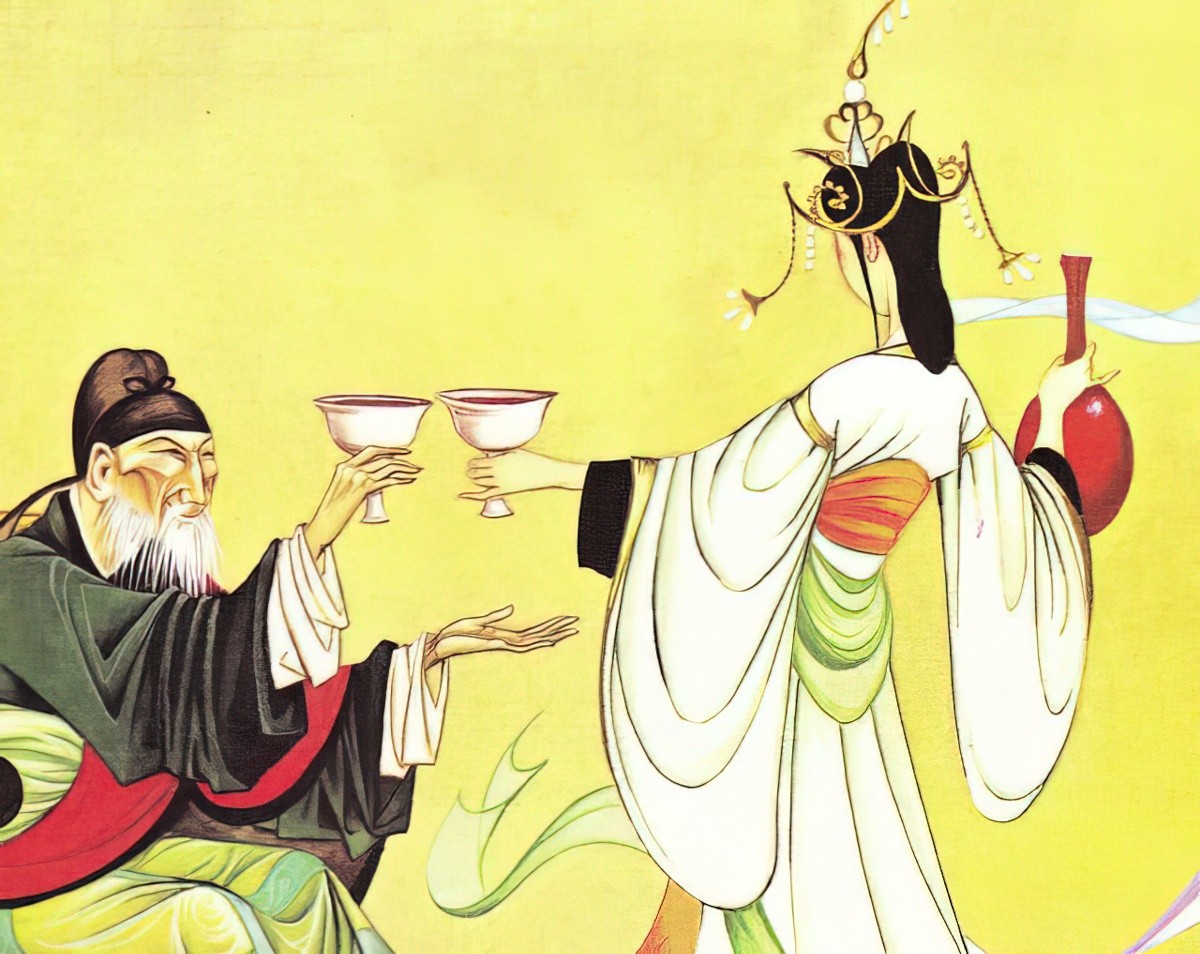
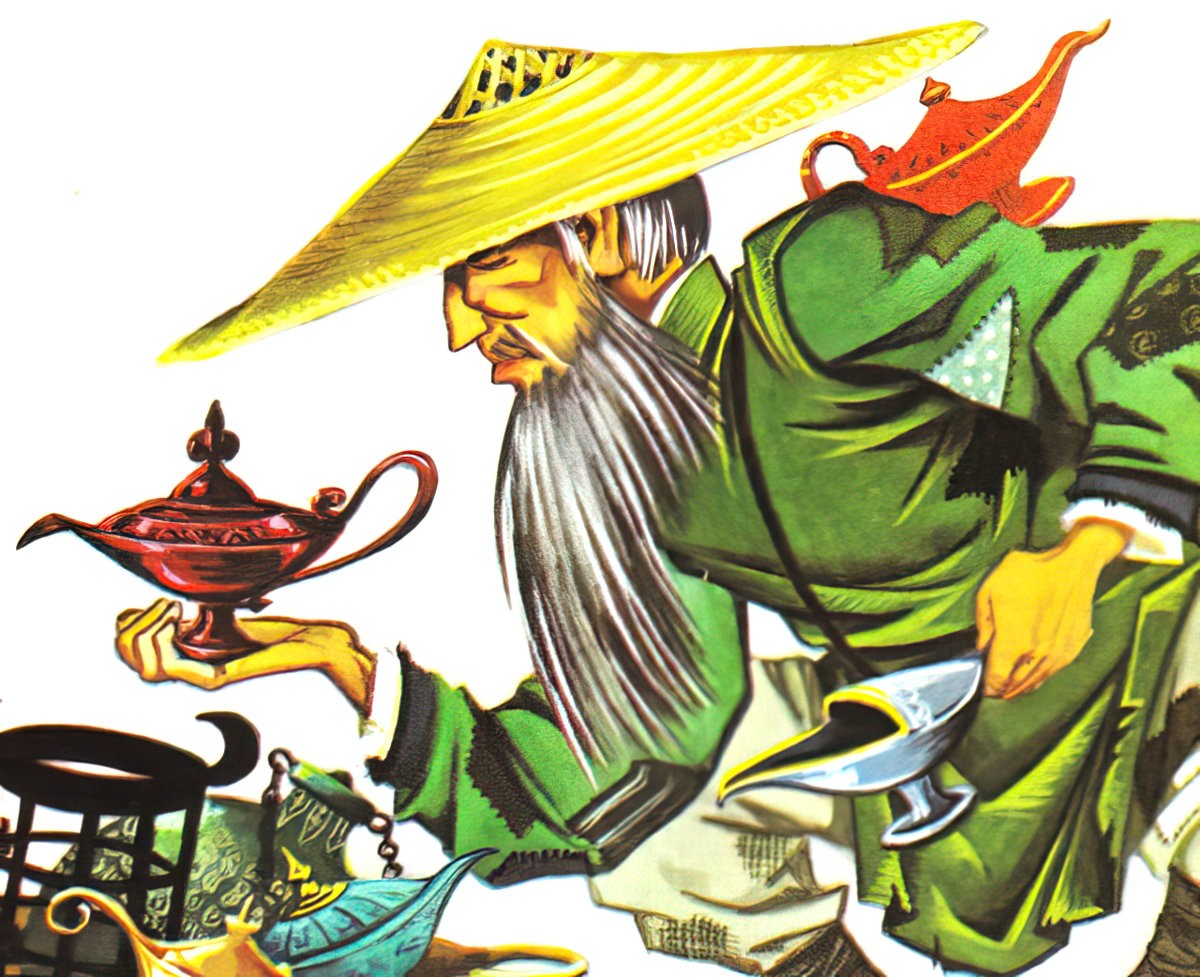
STORY STRUCTURE OF THE STORY ABOUT PING
PARATEXT
Ping was an adventurous duck who lived on a beautiful wise-eyed boat on the Yangtze River. He liked his life on the riverboat just and liked his large family and his kind master. He didn’t like to be the last in line to board the boat at night, for that unlucky duck got a loud spank. So what did Ping do when it seemed that he would be the last on line? What else but set out on his own to explore the fascinating world of life on the Yangtze River.
The Story about Ping is one of the best-loved and enduring children’s books, both for its spirited and irrepressible hero and for its beautiful evocation of a distant land and way of life. Every child can sympathize with a dawdling duck who wants to avoid a spanking, and share his excitement and wonder as he sails down the river.
MARKETING COPY
SHORTCOMING
Ping’s shortcoming is that he doesn’t pay attention to home time. And when he realises he’s late to get back onto his boat he ‘chickens out’ of going home at all — he is too scared to face the whipping he’ll get for being the last.
DESIRE
But after a night in the reeds he is lonely and wants to find his way back to his family.
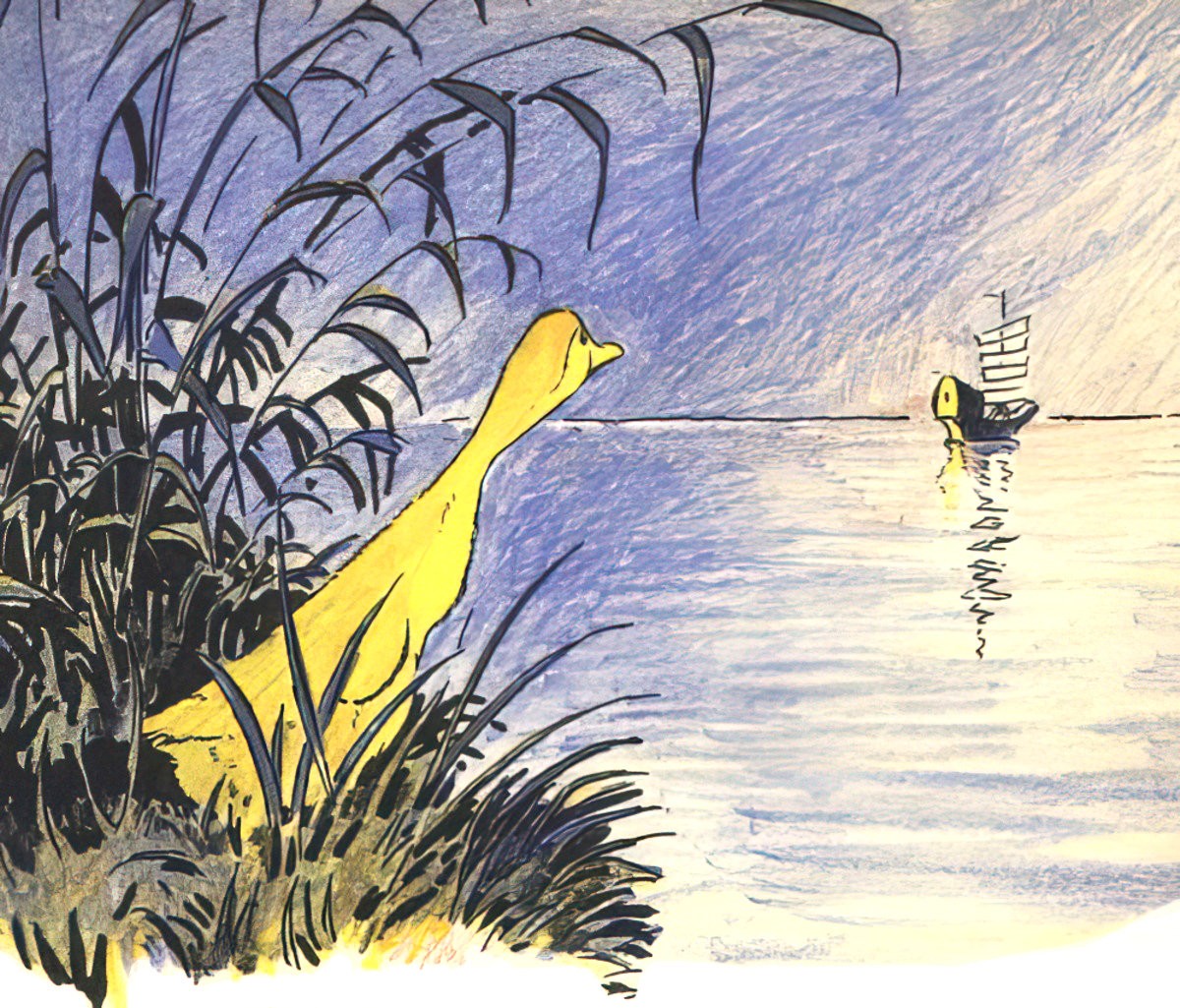
OPPONENT
A boy falls overboard and finds him. The mother is the main opponent; she wants to cook Ping up for dinner.
PLAN
The boy is the one with the plan. (In a picture book this often happens — the dual role of ‘hero’ of the story is shared between an animal character and a human character. Hence, the story steps switch to the human character at some point. The boy plans to release the duck before his mother can cook him. He comes very close to death, because dusk is falling outside the basket and he’s trapped inside.
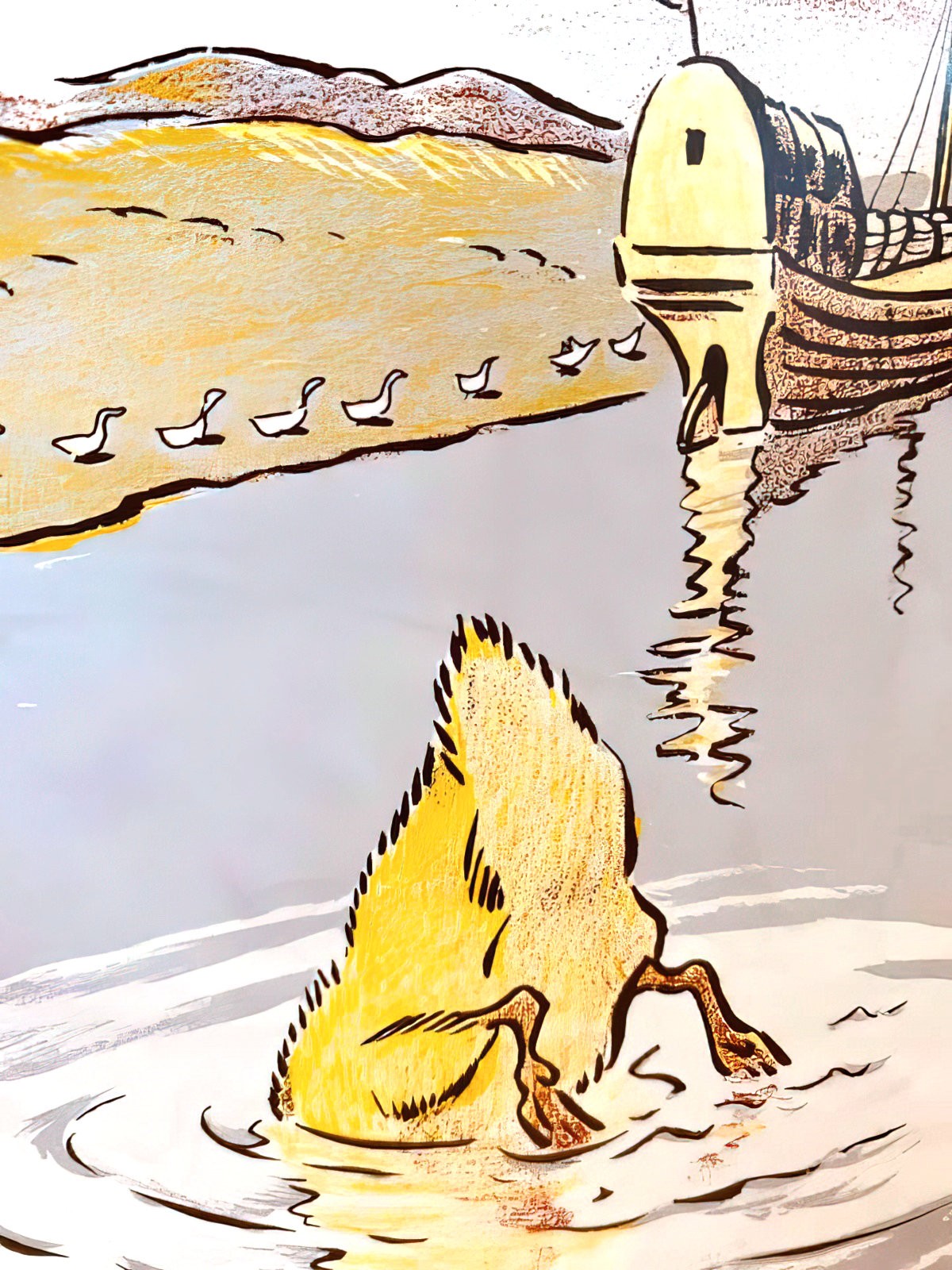
BIG STRUGGLE
Ping walks the gang plank back onto his boat but he suffers a whip.
ANAGNORISIS
He realises that even if he’s late, being whipped is better than being without his family.
NEW SITUATION
Back with all his family…
Home again on the wise-eyed boat on the Yangtze river.
THE POPULARITY OF PING
I didn’t grow up with this story. In New Zealand we were listening to Badjelly The Witch every Sunday Morning on Radio New Zealand with Constable Keith and his Alsatian, Sniff. (The dog was actually a stiff puppet.) We also had plenty of The Little Engine That Could, and a story I wish I could find now about some slugs who loved the ‘nice juicy lettuces’ (read in a beautifully deep voice), though shows that focused on reading weren’t part of 1980s broadcasting, unfortunately. The closest we had were the picturebooks shared on Playschool.
Meanwhile, in a different part of the world:
Ping has appeared on television since the 1950s. Actor Sterling Holloway or possibly Captain Kangaroo (or his friend Mr. Greenjeans) read Ping once a week on his show for seventeen years, while displaying its colorful illustrations in stark black and white on the screen. Only Stone Soup, Mike Mulligan and His Steam Shovel, and The Little Engine That Could had longer runs on the show.
What’s not said is that this refers to ‘American’ television. (We can assume an American bias in most Wikipedia articles, I suppose.)
FURTHER READING
Here’s another Kurt Wiese book
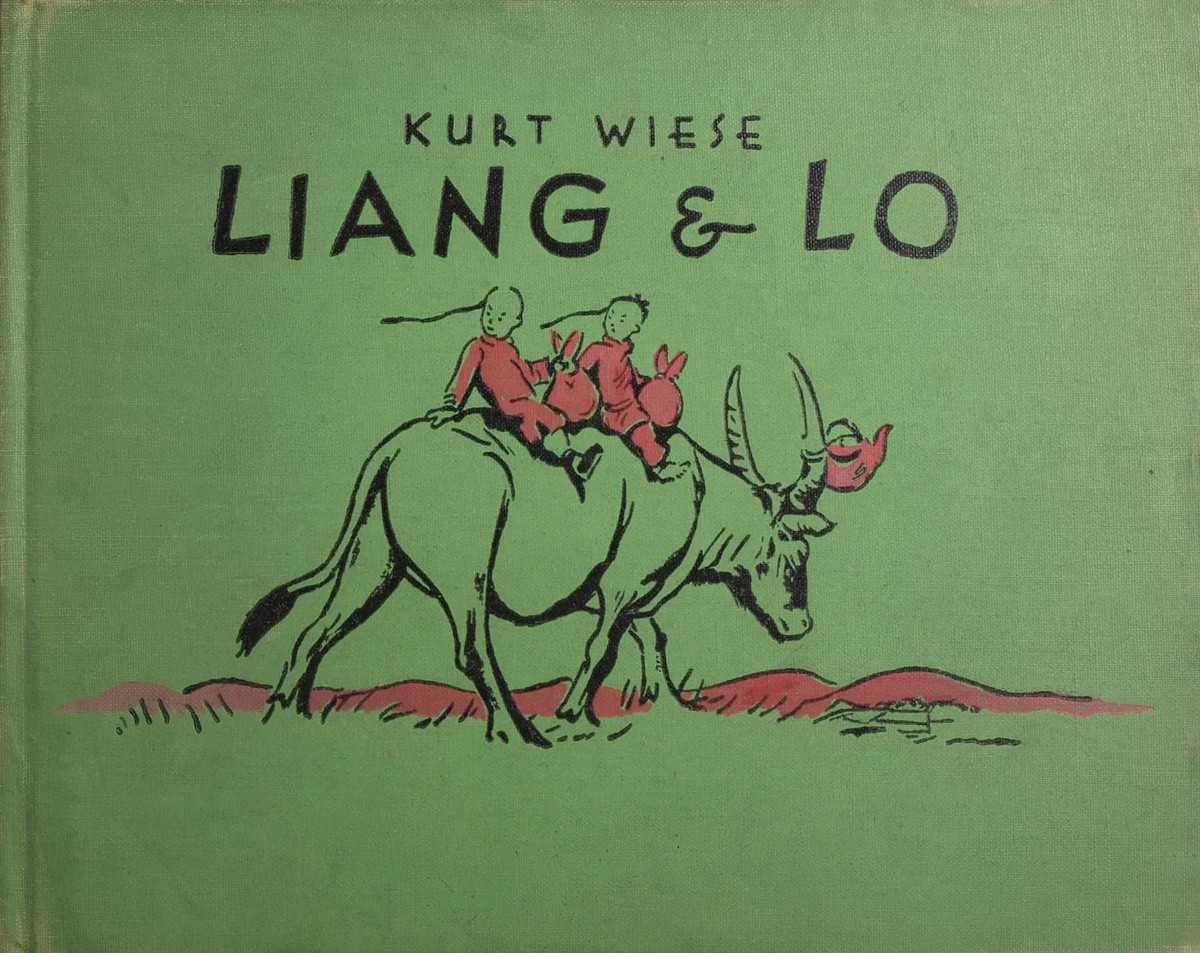
and here’s another book by Marjorie Flack, who was both author and illustrator of Humphry: One Hundred Years Along the Wayside with a Box Turtle
